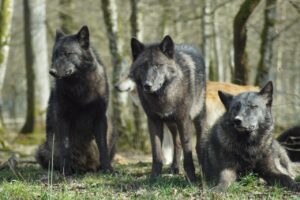Have you ever heard the saying, “the alpha wolf dominates the pack”? This statement is one of the most persistent myths in popular culture about wolves. But the truth is far more complex and interesting. In this article, we’ll explore the truth behind the alpha wolf myth and what science really tells us about the social structure of wolf packs.
First of all, let’s define what we mean by “alpha.” Alpha is often used as a synonym for dominant or top-ranking, but in the field of animal behavior, it refers specifically to the individual who is highest in the social hierarchy and has priority access to resources like food and mates.
There are so-called “Alpha Males” within a given set of human males. They falsely believe the myth of the alpha so they use this to try to dominate others. This is nothing but bullying in the guise of being this myth of alpha. Let’s look at the reality of wolf packs…
So, do wolf packs have an alpha wolf that rules over the others with an iron paw? No, not exactly. Wolves are social animals and live in packs, but their social structure is much more fluid and dynamic than the old alpha wolf stereotype would have us believe. Instead of a rigid hierarchy with one dominant wolf at the top, wolf packs are more like families, with a complex system of relationships and dynamics that can change over time.
In the past (Schenkel, R., 1947), wolf behavior was often studied by observing captive wolves in zoos and other captive settings, which led to misconceptions about their social structure. More recent studies of wild wolf packs have shown that wolves actually have a flexible social structure based on cooperation and mutual support, rather than a strict dominance hierarchy.
Wolves in a pack cooperate to hunt, raise their young, and defend their territory, and pack members form close bonds with one another. The concept of an alpha wolf is simply not applicable in the complex and ever-changing social relationships of wild wolves.
So why does the alpha wolf myth persist? Part of the reason may be that the idea of a powerful, dominant wolf resonates with people, tapping into our fascination with strength and hierarchy. But it’s also a myth that’s been perpetuated by popular media and misinformation, which can be hard to dispel.
Just to emphasis, the alpha wolf myth is just that – a myth. While wolves do live in packs and have complex social relationships, the idea of an alpha wolf ruling over the others with an iron paw simply doesn’t hold up to scientific scrutiny. The next time you hear someone talking about the alpha wolf, remember that the truth is far more interesting and dynamic than the myth.
Reference: Schenkel, R., 1947, Expression Study on Wolves: Captivity Observations.
